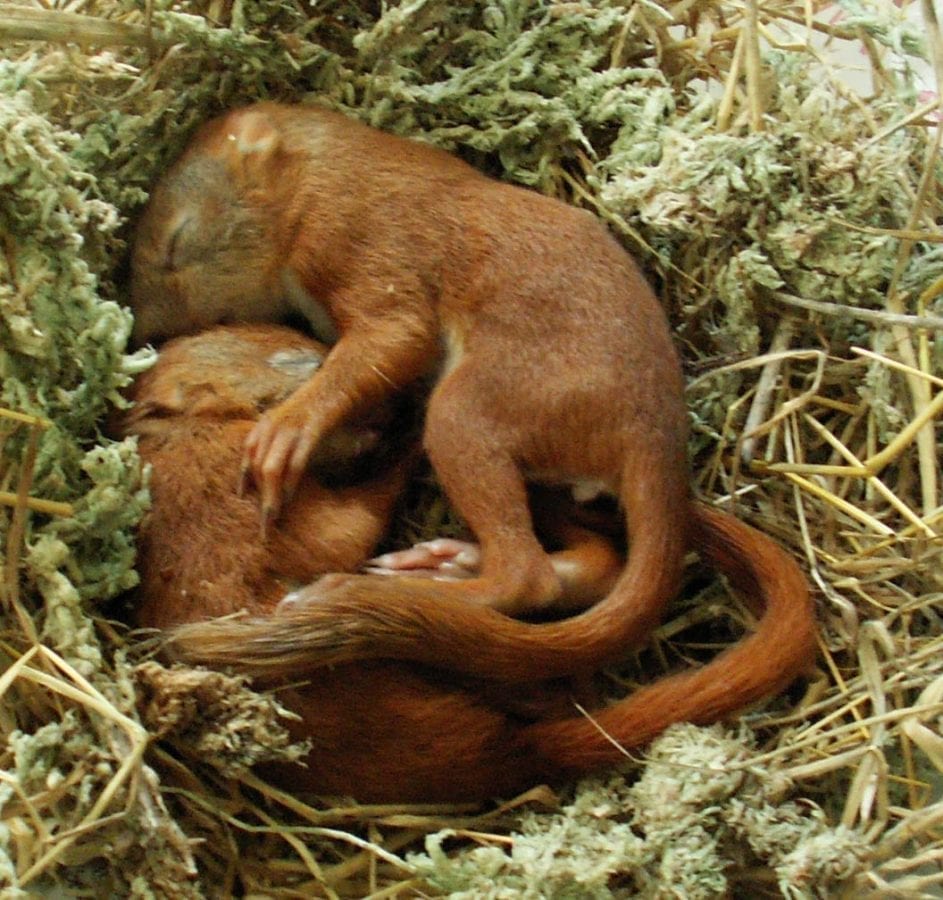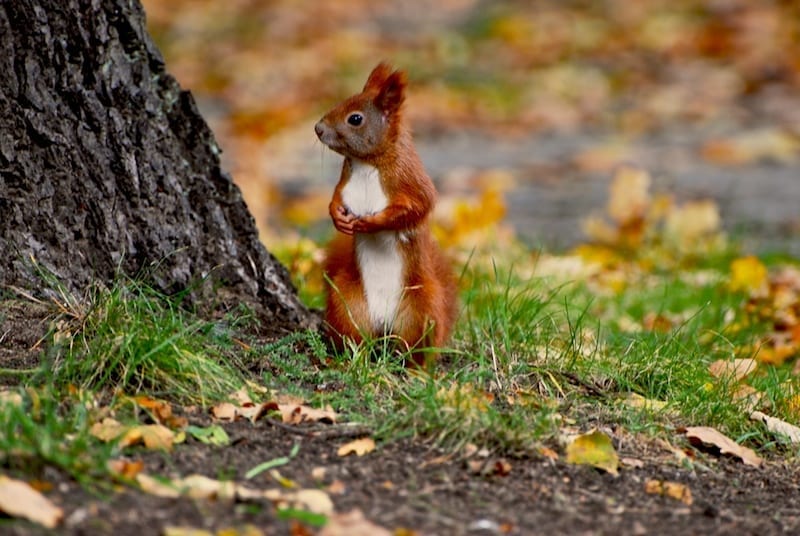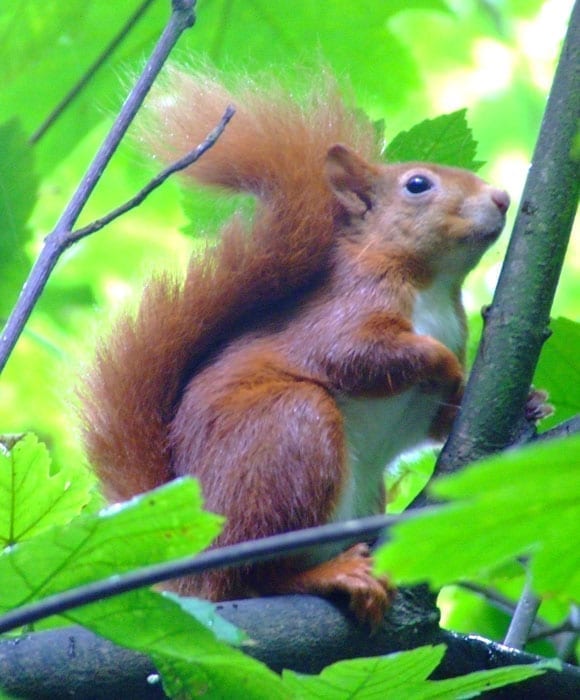About Red Squirrels
To the majority of people living in the British Isles today, the mention of red squirrels conjures up mental images of Beatrix Potter’s Squirrel Nutkin or RoSPA’s iconic road safety educator Tufty Fluffytail. But for those privileged few who live in a ‘red squirrel only’ area there remains the opportunity to witness our native species in for real in its natural habitat.
Although the reds are elusive and timid by nature, this only serves to add to their appeal and the thrill of seeing this most charismatic of our native woodland mammals.

A Little Bit Of History
Historically our native red squirrels colonised the whole of the British Isles. It wasn’t until 1876 that Mr Brocklehurst introduced grey squirrels into Henbury Park in Cheshire. This was followed by 30 releases elsewhere in the country, thus sealing the fate of red squirrels in mainland Britain.
Woodland destruction throughout the British Isles has contributed to the reduction in the number of squirrels and over the years, tree loss due to development and modern farming methods has decreased woodland cover and vital hedges linking woods together. Small isolated populations of red squirrels have and will continue to be wiped out in poor seed crop years and will not be replaced if ‘corridors’ of hedges and / or trees linking woods together are lost.
The Isle of Wight is fortunate in having the Solent as a barrier to direct grey squirrel invasion. However our red squirrels have not been spared the landscape changes that also affect the rest of the country.


A Few Facts About Red Squirrels
- An adult red squirrel’s body measures roughly 22cm and their tail roughly 18cm
- They weigh about 300g, which is about the same as a bag of sugar
- You cannot tell the difference between boys and girls by their size or colour
- They change their coat twice a year and the coat can change colour when this happens
- There are red squirrels on the islands in Poole Harbour, in the north of England and Scotland as well as on the Isle of Wight.
- There are an estimated 145,000 red squirrels and 2,700,000 greys in the U.K.
- About 3,500 red squirrels live on the Isle of Wight
